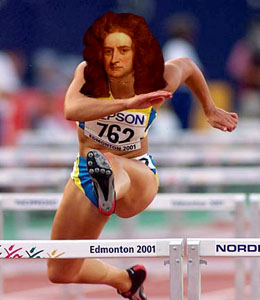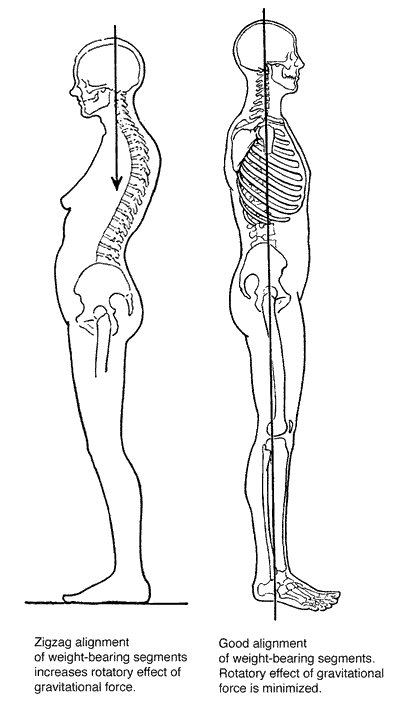
Week 9: Movement
Describing Human Motion
| Metabolism | Movement | Observing Motion | Workplace Mechanics | |
There are two major methods of motion analysis:
- Kinematics: study of whole body or major segmental motion such as angular and linear displacements, velocities and accelerations. Lifelike animation is based on kinematic studies.
- Kinetics: study of movement-related forces, such as internal and external forces and moments.
Understanding motion begins with laws originally defined by Sir Isaac Newton. Newton's Laws provide the basis for most motion analyses.
Newton's Laws
or - How and Why Things Do What They Do.

- Inertia
A body continues in its initial state of rest or motion with uniform velocity unless acted on by an external force. - Acceleration
A body's acceleration is inversely proportonal to its mass and directly proportional to the resultant force acting on it. - Action/Reaction
For every action, there is an equal and opposite reaction. In other words, forces occur in pairs, each acting in opposition to each-other.
Some other motion-related information:
- Motion is relative to a specific point of reference. A passenger seated in a plane is motionless relative to the plane, but in motion relative to the earth.
- Force is the instigator of movement, which depends on the magnitude of force relative to the magnitude of resistance to the force.
- Movement may be classified as:
- Translatory: linear motion. Rectilinear is a straigh-line progression. Curvilinear referes to curved translatory movement.
- Rotatory/Angular: object moves in a circular path about a fixed point. Most motions of the body are angular
Motion Description
Linear Kinematics: displacement refers to the distance an object is removed from a reference point in its final position. Linear kinematics deal with displacements and their derivatives.
- Speed refers to displacement over time. ex: meters per second.
- Velocity gives direction to speed. ex: 50 mph south.
- Acceleration is a change in velocity over time.
Angular Kinematics: deals with movement around an axis. Based on angular displacements, which are stated in degrees, revolutions or radians -- one radian is 57.3 degrees, and one revolution is 360 degrees.
Kinetic Considerations
Muscle energy needed to maintain an erect standing position is not great, mainly due to ligamentous support. In most cases, when we stand, the line of gravity relative to the base of support is constant in different positions due to the body's ability to compensate.

It is generally thought that prolonged postural strain may be injurious to bodily structures from repeated stretch of ligaments and cartilage subjected to uneven or abnormal forces.
| Metabolism | Movement | Observing Motion | Workplace Mechanics | |